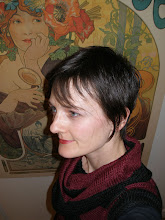Judgement Day
Whew, it has been a busy couple of weeks. A few months ago I received an unusual email at work. It was an open invitation to Genentech researchers to judge a science competition. I hadn't heard of this particular event - it was called the Intel International Science and Engineering Fair (ISEF). It turns out to be a worldwide competition among high school students for the best independent research projects. There are nearly 20 different categories in which to compete, and they range from physics and engineering to animal science and medicine.
I volunteered to be a judge and my friend Mark who has a physics background joined in as well. I didn't realize the scale of the event until we arrived to find over 1600 students and a pool of 600 judges from all over the globe! Each student brought a poster presentation with them and had their own little booth. They had to explain their work to a rotating panel of PhD-level judges every 15 minutes over the course of an entire day. Talk about a gauntlet! Pictures of the event can be found online.
There were very impressive projects, some of them almost on the Masters level. These were teenagers who were comfortable using confocal microscopes, who understood graduate-level genetics, and who built their own particle accelerators with parts they bought off eBay. Some projects were high-tech, some endearingly low-tech. Regardless of the tools they had available, big points were awarded for creativity and sound scientific reasoning. Interestingly, because these kids were from all over the world - Ireland, Pakistan, Hong Kong, you name it - a few of them needed translators to aid them in their presentations.
On top of this the Cal State University science fair came up in San Jose just a couple of weeks before the Intel thing. This was something I participated in two years ago. They needed extra help this year, so I ended up volunteering for both events. It was great fun hearing about all the wonderful science kids are up to these days, and being able to give something back to the scientific community.



0 Comments:
Post a Comment
<< Home